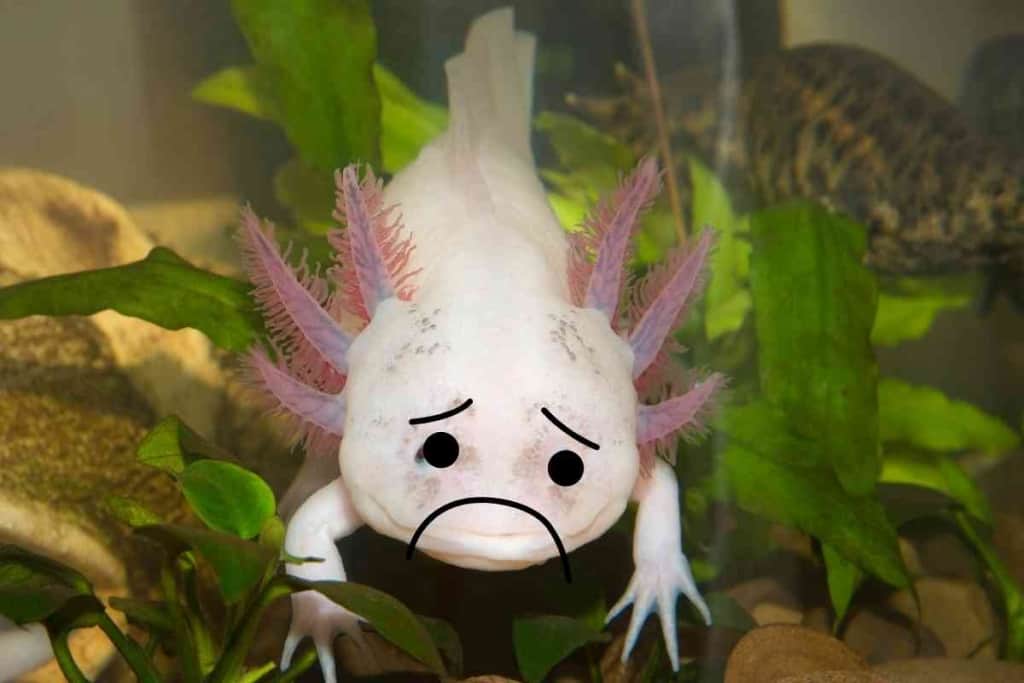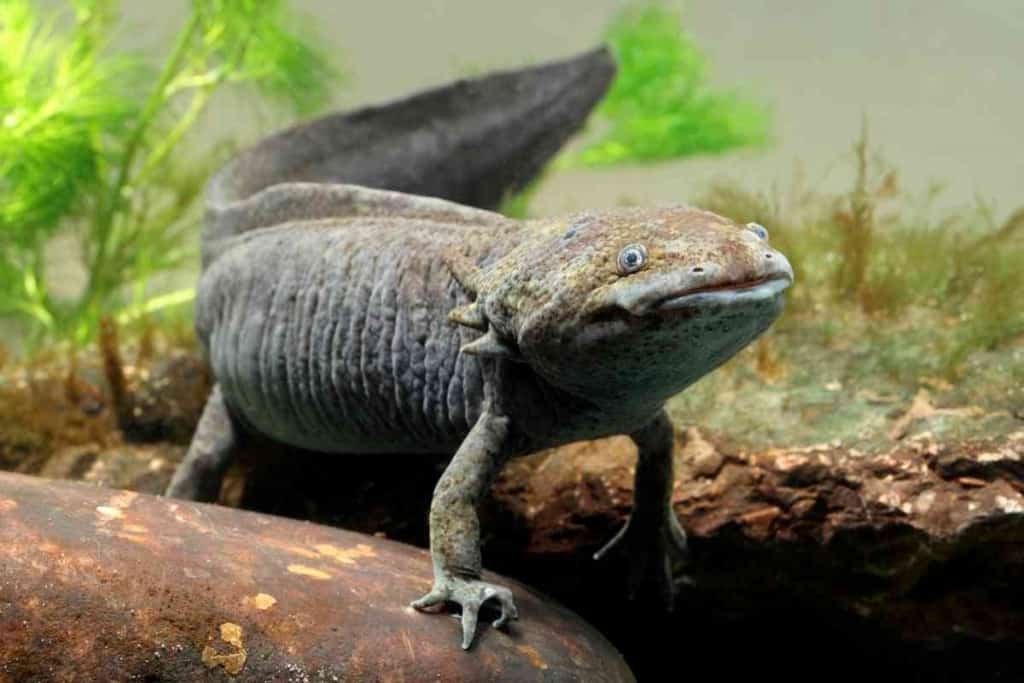Can Axolotls Get Depressed? Signs Your Axolotl Needs Help!
It may be easy to look at an adorable axolotl or other amphibian and worry about their mental health. Fortunately, axolotls are one of the most low-maintenance and easy-to-manage amphibians that won’t require much feeding, attention, or other care. Being concerned about your pet axolotl is only natural for any caring owner, but knowing what your amphibian needs to maintain a happy disposition is the first step to ensuring their health and well-being.

Is It Possible for Axolotls To Get Depressed?
Axolotls are not prone to depression and will be happy with minimal care. These amphibians can be content in a tank for up to two weeks without food, making them the perfect pet candidates for busy families or those who don’t have much time for needier pets, like dogs or cats.
Read on to learn more about axolotls, distress symptoms in axolotls, and what you can do to ensure your axolotl is happy and healthy.
What Are Axolotls?
Axolotls are carnivorous amphibians that grow up to 12 inches long and weigh about eight inches. These creatures can be the size of a teacup and are critically endangered. Axolotls earned their name from the Aztec god of fire and lightning.
Axolotls may look like salamanders, but these creatures maintain their youthful look all their lives. These creatures will be happiest when fed their favorite foods, including crustaceans, mollusks, and eggs that lay on the aquarium floor. Axolotls might also feast on small fish in their tank.
Symptoms of Distress in Axolotls
Although axolotls don’t get depressed, these pets will show signs of distress in certain situations.
For example, your amphibian might show aggressive signs if they are injured, feel sickly, or need to eat after a long period without food.
Appetite Loss
Your axolotl might suffer from appetite loss and leave their food untouched if they suffer from an illness or under distress. Usually, a loss of appetite is the first symptom of strife and may be a warning signal that more signs may appear in your axolotl’s behavior.
Curled Gills
Curled gills on your axolotl might mean that your axolotl is sick or has come down with a fever. Some illnesses can be life-threatening for an axolotl and may result in death if they don’t receive treatment.
Black tea baths, warm water, or treated water baths may help axolotls heal. Salt baths may also help cure axolotls. Use home remedies before seeking advice from an authority or expert on amphibians.
Some common illnesses include bacterial or fungal infections.
Constant Hiding
An axolotl that is not feeling well might hide away constantly, making it harder to spot them. Constant hiding may mean something is physically wrong with your axolotl or mentally distressing to your axolotl.
Check to ensure they are eating and monitor how often they come out during the day to ensure they aren’t sick.
Leaving Water
If your axolotl puts its back or tail out of the water, it might be feeling distressed. Sometimes, a sick axolotl or one without enough hiding spaces to get comfortable might stay close to the surface of the tank.
Ensure that your axolotl is in good health by monitoring how much they are eating and offering them more hiding spaces to discourage this behavior.

Constant Zooming Around
A little zooming around your tank is typical for an axolotl and will occur when your axolotl is startled. This zooming will happen when your axolotl gets spooked by something outside or inside the tank. Sometimes, a loud noise or strong vibration might rattle the tank and cause your axolotl to feel distressed.
Be mindful of what behaviors are startling your axolotl, and avoid doing things around the home that disturb your tank.
What Do Axolotls Need To Be Happy?
Axolotls won’t need much to be happy and thrive, but they will need a few conditions to be met. These amphibians make great pets as long as they are fed as often as their bodies demand and have their environmental conditions met.
Aquatic Environment
A tank is a perfect place for axolotls to live. axolotls are amphibians but use water as their primary living environment.
If the water is maintained at a proper temperature your axolotl will remain consistently happy without any issues arising. The water temperature in an axolotl tank should be between 55 and 66 degrees for your axolotl’s peak comfort.
Additionally, there must be plenty of decoration to accompany your tank. Axolotls enjoy hiding spaces and other foliage to remind them of the wild. Like fish, axolotls might get distressed without a proper level of environmental decoration.
The lid to your axolotl tank should always be secured to prevent harm when this pet tries to jump out. They may hurt themselves easily if the axolotl aquarium lid is not secured.
Water quality and ensuring your water stays within the axolotols preferred water parameters can ensure that they stay happy for a long time. Good water quality is basically the only thing these guys need.
Proper Tank Size
Axolotls need a proper tank size. Usually, a 15 to 20-gallon tank will be ideal and provide axolotls with all the space they need to grow, thrive, and hide away.
Although these creatures are amphibians, they won’t require any land in their tank, making their setup all the easier to manage.
Axolotls spend their lives in the water, and although axolotls are a touch clumsy, they will likely not hurt themselves in their tank unless the lid is unsecured.
Hiding Spots and Decor
Axolotls will need plenty of spaces and hiding spots to keep them busy and maintain their peak happiness. Although this may make observing them a little more challenging, hiding spaces are vital for ensuring that they can rest and relax away from any lights.
Axolotls will need plenty of moderate light and enjoy looking around outside their tank, but they prefer some hiding spaces to keep away from prying eyes and observers. However, the light doesn’t bother them much.
How Long Can Axolotls Live?
Axolotls can live for anywhere between 10 and 12 years when they receive all the proper care they need.
Final Thoughts
Axolotls are adorable amphibians that will make perfect pets for even the busiest families. These pets are very low-maintenance and can go up to two weeks without being fed. Additionally, axolotls can thrive in dark, dank conditions and enjoy a tank where they can relax alone. Although these pets enjoy their alone time, they aren’t opposed to observant owners who enjoy looking at them.
Busy families who love the adorable look of this pet will enjoy these easy-to-manage amphibians who only need some space to hide, an appropriate environment, and a few decorations to keep them company.
Thankfully, these mild needs will keep your axolotl from succumbing to depression or other mental health distresses.
